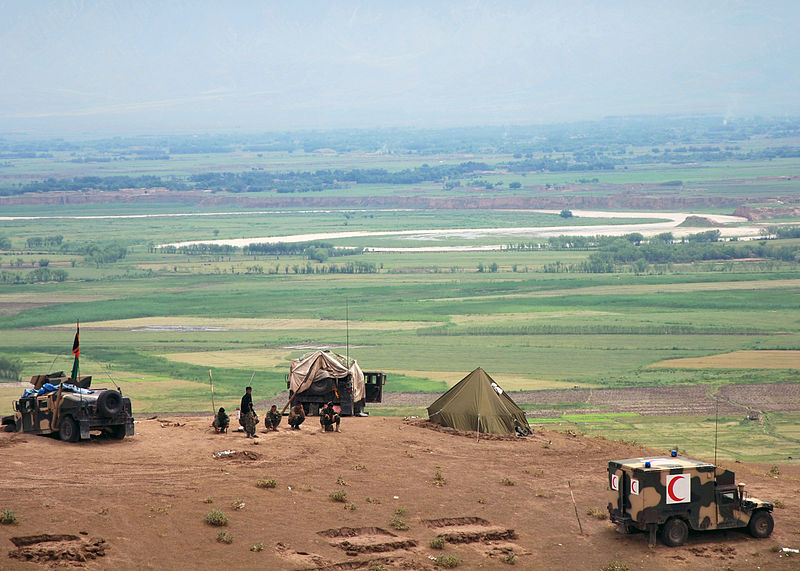Programme for peace in Afghanistan
by Dr Matin Baraki
For Afghanistan there is no rest. The war in this country continues every day, as it has for almost forty years. Here Matin Baraki, who teaches at the University of Marburg, Germany, proposes some solutions. Baraki, who himself came from Afghanistan and left the country in 1974, has elsewhere documented the attempts to build a democracy there, the failure of these attempts since the beginning of the 1960s, as well as the responsibility of foreign powers, especially the United States and its allies, for this failure.
**********
For more than 33 years the “International Community” has been waging a hidden war and, for the last 13 years an open war, against Afghanistan. Its whole social fabric has been destroyed, including the infrastructure. The economic, political and social foundations of the country have either been annihilated or so heavily upset that there won't be a functioning society at the Hindu Kush for the foreseeable future. Based on my field research and countless talks with people from different social classes in Afghanistan, I came to the conclusion that it is high time to think about alternatives to the NATO war: 33 years are more than enough. We finally have to implement peace. The following proposals are aimed at encouraging discussions and talks:
1. A unilateral und unconditional truce by NATO, initially for at least six months
2. Replacement of the NATO units by International Security Assistance Force (ISAF) consisting of units from Islamic and non-aligned states. Four-fifths of all blue helmet soldiers of the UN come from non-aligned states. Why not in Afghanistan?
3. Closure of all NATO military bases and support bases and termination of all contracts concerning those negotiated with the Kabul administration.
4. A national reconciliation policy with all political groups including the Islamic ones like the Taliban, the Hesbe Islami of Golbodin Hekmatyar and the Haqani Network.
5. Creation of a Truth Commission based on the South African model.
6. Dissolution of all military and paramilitary units of the warlords and the foreign and Afghan private security companies.
7. Preparation of nationwide elections in villages, councils and districts for a national Loya Djerga (Council) under the control of independent international organizations like peace, women, students and trade union movements.
8. Constitution of a Loya Djerga, elected by the Afghan people, but no appointment of any deputies by the president.
9. At this Loya Djerga, a provisional government and commissions to prepare a draft constitution should be elected, based on the abolition of the presidential system and on new laws on elections, political parties and trade unions.
10. General, free and independently controlled parliamentary elections.
11. Election of a new government through parliament, without interference of the interim president still in office.
12. Abolition of the open-door policy and the development of economic, finance, customs and tax policies based on national interest.
13. Measures to reconstruct the devastated country based on one fourth of the costs of the NATO war. These funds should be stored in an independently controlled escrow account and should only be for project-related use.
14. In order to strengthen regional cooperation and stability, the neighbouring states should be involved in the reconstruction of Afghanistan.
15. In the region, the creation of a Central South Asian Union should be aimed at. Besides Afghanistan, the four Central Asian states of Tajikistan, Uzbekistan, Turkmenistan and Kazakhstan should be members, as well as Iran, Pakistan and India. All these countries have many things in common like languages, religions and even national history.
16. As a confidence-building measure, Afghanistan should be the first country to discard its army after five years.
17. A Central South Asian Union could also help to solve both the Kashmir conflict (1) between India and Pakistan, and the conflict about the Durand-Line (2) between Afghanistan and Pakistan.
18. Then, it would be high time to abolish the nuclear arsenals of India and Pakistan. This could turn one of the most conflictual regions on the Asian continent into a zone of peace, stability and prosperity.
(1) See also Baraki, Matin: Regionalkonflikt unter Atommächten: Der Streit um Kaschmir, in: Blätter für deutsche und internationale Politik, Bonn, Jg. 46, 2001, H. 8, S. 976-984.
(2) Due to the Durand treaty, enforced by the British on November 12, 1893 and under the rule of Amir Abdul Rahmans (1880-1901), Afghanistan acquired the internationally recognized status of a British protectorate. As a consequence of this treaty, around 190.000 square kilometers of Afghan territory with around 9 billion inhabitants were handed over to British India. This border demarcation was only designed for strategic reasons: to cut off Afghanistan from access to the Indian Ocean. It divided the region inhabited by both Pashtuns and Baluchs while ignoring any tribal or natural borders. It even divided families. After the foundation of the state of Pakistan in 1947, this originally Afghan territory was left to Pakistan by the British colonialists. As both Afghanistan and Pakistan up until now claim the area as belonging to their state, the Durand-Line is the basis for an ongoing, unresolvable conflict that has led to many military clashes.

The Afghan National Army in Baghlan Province






